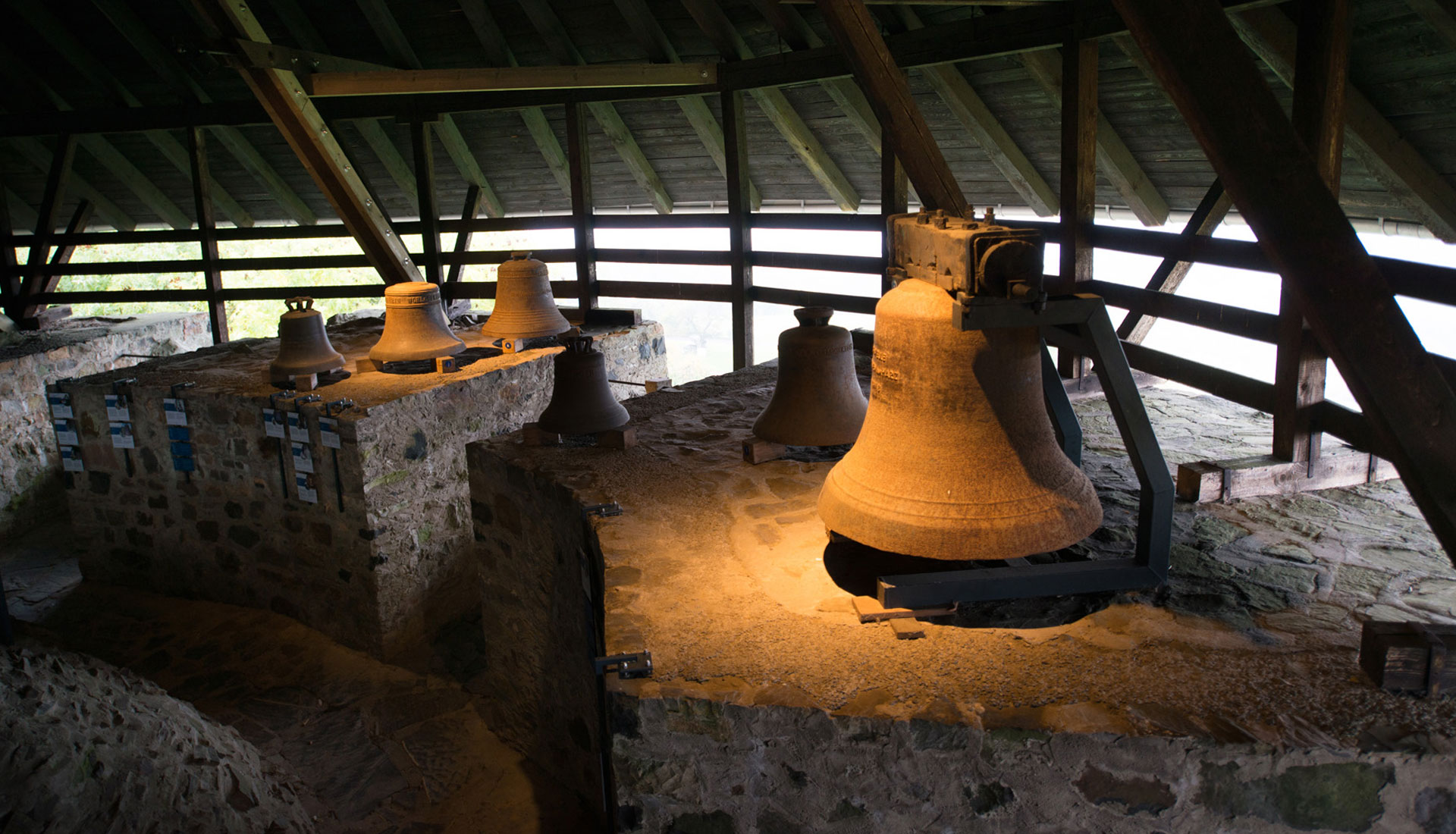

Westerwald euphony
 © Hessen Agentur_Paavo Blåfield
© Hessen Agentur_Paavo Blåfield

 © Hessen Agentur_Paavo Blåfield
© Hessen Agentur_Paavo Blåfield © Hessen Agentur_Paavo Blåfield
© Hessen Agentur_Paavo Blåfield
“Walled in fast within the earth / Stands the form burnt out of clay. / This must be the bell’s great birth! / Fellows, lend a hand to-day.” Hanns Martin Rincker gracefully recites the first lines of Schiller’s most famous poem, “The Song of the Bell”. It’s no wonder he’s able to do so, considering he’s a 13th-generation bell founder and runs Germany’s oldest bell foundry with his brother, Fritz Georg. This makes him a sort of walking-talking encyclopaedia of bells. He has a fact or an anecdote for almost every bell and chime in Germany and abroad.

The Rincker company was founded in 1590 and moved to its current location in Sinn in 1817. They relocated due to the special quality of the clay – a vital part of bell production. In many places, however, production has been switched to the faster and cheaper sand-moulding process. Rincker, like the other four German bell foundries, continues to use clay – it just sounds better. “That’s also why we have such a good reputation around the world – our bells are used in South Korea, Hungary and Chile – and in the Kaiser-Wilhelm Memorial Church at the Ku’Damm in Berlin”, says Rincker. “We need at least four weeks rather than one to make our bells, but the sound has a soul – it’s alive.” Rincker believes it’s like comparing the sound of a grand piano and an electric piano. Objectively speaking, the sound is the same; but subjectively speaking, quality sound is lost when the production method is simplified.
 © Hessen Agentur_Paavo Blåfield
© Hessen Agentur_Paavo Blåfield
Greifenstein Castle towers over Sinn. Its striking silhouette with its twin towers is the region’s landmark. Rincker has a special relationship with this building. “My father wanted to advertise our business and had the idea of installing a bell museum there”, he explains. Over the years, the collection has grown to include almost 100 bells of all sizes, from church bells to small, handheld bells. Together, they tell the thousand-year history of German bells. Rincker enjoys coming up here: “The views from the castle are fantastic – they span as far as the hills of the Taunus and the Vogelsberg. You can even make out Wetzlar and Giessen”. But it’s also three to four degrees cooler up here than down in the valley. This is due to the wind here, which is often sung about and has even been immortalised in the “Westerwald Song” as it whistles along the castle walls. Following the traditions of the early bell founders, Hanns Martin Rincker also likes to spend his days off up here. “Because of the high customs duties, many bell founders used to move around to save money. I like to go walking too – but that’s got more to do with the varied landscape than avoiding any taxes”, he says, with a twinkle in his eye.
 Hessen Agentur_Paavo Blåfield
Hessen Agentur_Paavo Blåfield © Hessen Agentur_Paavo Blåfield
© Hessen Agentur_Paavo Blåfield
And you can best experience the mineral landscape on foot, with its characteristic contrasts of forests, grassland, ponds, lakes, caverns and caves. The “Greifenstein loop” Wällertour is one of the most picturesque hiking trails in the region. The 36-kilometre route takes you from the picture-perfect timber-framed town of Herborn through to Greifenstein and all the way to Rehe, where it meets the WesterWaldSteig trail. The trail takes you up and down through shady sections of forest and then out into wonderfully fragrant meadows. If you start in Herborn, you can easily make it to the Ulmbachtalsperre reservoir in a day. Here you can refresh your tired feet in the bathing lake and stay in one of the four cosy trekking huts which the campsite has to offer. They each accommodate up to two people. Or you can stay in the more luxurious Landhaus ”Hui Wäller“ in Beilstein. Axel and Martha Schmidt have transformed a desolate building into a perfectly restored gem. Its hall is a regular venue for cultural events that attract people from across the region. The Ulmtal cycle route runs along a former railway track and now goes directly past the terrace with its idyllic pond. From Beilstein, you can reach the Krombachtalsperre reservoir – another of Westerwald’s many bathing lakes – within a day. From there, you can choose whether to follow the WesterwaldSteig trail to Rhineland-Palatinate or head back to Herborn via the Fuchskaute, the highest point in the Westerwald region (657 metres). “If you take this route, you just have to visit the Herbstlabyrinth”, explains Rincker. “It’s Hessen’s largest system of caves with really interesting and impressive illuminated stalactites”.
North Hessen – the home of the Brothers Grimm
The Vogelsberg